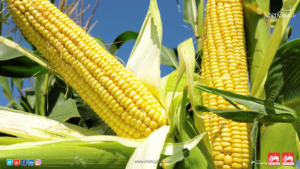Poultry farming in India
Poultry farming in India has emerged as a dynamic and profitable sector, providing livelihoods to millions of people and contributing significantly to the country’s agricultural economy. With the growing demand for poultry products such as eggs and meat, farmers have numerous opportunities to capitalize on this thriving industry. However, determining which type of poultry farming is most profitable requires a comprehensive analysis of various factors, including the choice of poultry species, market trends, production methods, and government support. In this blog, we will explore the profitability of different poultry species, compare egg and meat production, examine integrated farming models, and highlight the economic benefits of nutrition, selective breeding, and government support – https://dahd.nic.in/
Poultry Industry at a glance:
| Aspect | Details |
| Industry Overview | Significant part of the Indian agriculture sector; major producer of eggs and broilers. |
| Major Poultry-Producing States | Andhra Pradesh, Tamil Nadu, Punjab, Haryana, Karnataka, Maharashtra. |
| Types of Poultry Farming | Commercial (large-scale), Semi-commercial, Backyard (small-scale). |
| Key Poultry Breeds | Broilers: Cobb 500, Ross 308; Layers: White Leghorn, Rhode Island Red. |
| Egg Production | Approx. 90 billion eggs annually (as of 2024). |
| Broiler Production | Approx. 4 billion birds annually (as of 2024). |
| Key Challenges | Disease outbreaks (e.g., avian influenza), feed costs, biosecurity measures, market fluctuations. |
| Government Schemes | National Poultry Development Programme (NPDP), Poultry Venture Capital Fund (PVCF). |
| Export Markets | Limited; primarily to Middle East, Southeast Asia. |
Comparing Profitability of Different Poultry Species
Poultry farming in India includes a variety of species such as chickens, ducks, and quails, each offering distinct opportunities and challenges.
Chickens
Chickens are the most popular and widely farmed poultry species in India. They are primarily categorized into two types: layers (for egg production) and broilers (for meat production).
- Profitability: Chicken farming is highly profitable due to its high demand in both urban and rural markets. Broilers have a quick turnover rate, typically reaching market weight within 5 to 6 weeks, which translates to faster returns on investment. Layers, on the other hand, have a consistent demand for eggs, providing a steady income stream for farmers.
- Market Demand: The demand for chicken meat and eggs is continuously increasing due to population growth, rising incomes, and changing dietary preferences. Chicken is a staple in Indian households, and the growing trend of eating out and fast-food consumption further fuels demand.
- Trends: The broiler market is expanding rapidly, with a focus on value-added products like processed chicken and ready-to-cook items. The layer market is also seeing growth in the demand for organic and free-range eggs.
Ducks
Duck farming is prevalent in regions with abundant water bodies, such as Kerala and West Bengal. Ducks are raised for both meat and egg production.
- Profitability: Duck farming can be profitable, especially in areas where ducks have access to natural water bodies, reducing feed costs. Ducks are hardy birds and can be raised on low-cost diets, which contributes to profitability.
- Market Demand: Duck eggs and meat have a niche market, with demand primarily in specific regions and communities. However, with increasing awareness of their nutritional benefits, demand for duck products is slowly growing.
- Trends: The market for duck products is expanding with the rise of ethnic and gourmet cuisines that incorporate duck meat and eggs.
Quails
Quail farming is a relatively new venture in India but is gaining popularity due to its low investment and quick returns.
- Profitability: Quails reach maturity within 6 to 7 weeks and have a high egg-laying capacity, making them an attractive option for small-scale farmers. The initial investment is lower compared to chickens, and they require less space and feed.
- Market Demand: The demand for quail meat and eggs is increasing due to their unique taste and perceived health benefits. Quail products are considered gourmet and fetch a higher price in the market.
- Trends: Quail farming is gaining traction as consumers seek alternative and exotic poultry products. The health-conscious segment of the population is also contributing to the rising demand for quail eggs.
Egg Production vs. Meat Production
The choice between egg production and meat production depends on several economic factors and market dynamics.
Egg Production
- Economic Aspects: Egg production offers a steady and consistent income stream. Layers typically begin laying eggs at around 18 to 20 weeks of age and can continue for up to two years. The cost of feed is a significant factor, but the revenue from egg sales usually covers expenses and yields profits.
- Market Dynamics: The demand for eggs remains strong due to their nutritional value and versatility. Eggs are consumed in various forms, from breakfast dishes to bakery products. The market for specialty eggs, such as organic and free-range eggs, is also growing.
Meat Production
- Economic Aspects: Meat production, especially with broilers, offers quick returns due to their rapid growth rate. However, meat production can be influenced by market fluctuations, feed prices, and disease outbreaks.
- Market Dynamics: The poultry meat market is expanding rapidly, driven by changing dietary habits and the increasing preference for lean protein sources. Processed and ready-to-cook chicken products are gaining popularity, contributing to the growth of the meat segment.
Benefits of Integrated Poultry Farming
Integrated poultry farming combines both layers and broilers, maximizing resource utilization and profitability.
Advantages of Integrated Farming
- Resource Efficiency: Integrated farming optimizes the use of resources such as feed, space, and labour. By managing both egg and meat production, farmers can achieve better economies of scale.
- Risk Mitigation: Diversifying with both layers and broilers reduces the risk associated with market fluctuations and disease outbreaks, as the income streams are varied.
- Manure Utilization: Poultry manure from integrated farms can be used as organic fertilizer for crops, adding another revenue stream and reducing waste management costs.
Successful Integrated Farming Models
- Backyard Poultry Farming: Small-scale farmers often practice backyard farming, raising both layers and broilers alongside other livestock. This model is prevalent in rural areas and provides food security and additional income for families.
- Commercial Poultry Farms: Larger farms often operate integrated systems with separate sections for layers and broilers. This approach allows for efficient management and higher production volumes.
Role of Nutrition in Poultry Farming Profitability
Nutrition plays a crucial role in determining the profitability of poultry farming, as feed costs constitute a significant portion of production expenses.
Cost-effective Feed Options and Formulations
- Balanced Diet: Providing a balanced diet with the right mix of proteins, carbohydrates, vitamins, and minerals is essential for optimal growth and egg production. High-quality feed ensures better feed conversion rates and overall productivity.
- Alternative Feed Sources: Farmers can explore alternative feed sources like agricultural by-products, kitchen waste, and locally available grains to reduce feed costs. Incorporating unconventional feed ingredients can enhance profitability.
- Nutrient Supplements: Using supplements and additives, such as probiotics and enzymes, can improve digestion and nutrient absorption, leading to better growth rates and egg production.
Economic Benefits of Selective Breeding
Selective breeding is a powerful tool for enhancing poultry productivity and profitability.
Advantages of Selective Breeding
- Improved Growth Rates: By selecting birds with desirable traits such as rapid growth and high feed efficiency, farmers can achieve faster production cycles and increased profitability.
- Disease Resistance: Breeding for disease-resistant traits reduces mortality rates and lowers veterinary expenses, improving overall farm profitability.
- Enhanced Egg Production: Selective breeding of layers can lead to higher egg production rates and better egg quality, increasing revenue for egg producers.
Government Support and Subsidies
The Indian government has implemented various initiatives and support programs to promote poultry farming and enhance profitability.
Government Initiatives and Subsidies
- Subsidized Loans: The government provides subsidized loans and financial assistance to poultry farmers for setting up and expanding their farms. These loans cover infrastructure, equipment, and working capital needs.
- Skill Development Programs: Training and skill development programs are offered to farmers to enhance their knowledge of modern poultry farming techniques and management practices.
- Research and Development: The government supports research and development in poultry farming to improve productivity, disease management, and sustainable practices.
Leveraging Government Support for Profitability
- Access to Finance: Farmers can access government-backed loans and subsidies to invest in modern infrastructure and technology, improving production efficiency and profitability.
- Training and Education: Participating in government-sponsored training programs enables farmers to adopt best practices, optimize resources, and enhance farm productivity.
Choosing the Right Poultry Farming Path
Determining the most profitable poultry farming path in India requires careful consideration of various factors, including species selection, market trends, production methods, and government support. Chicken farming, with its high demand for both meat and eggs, offers significant profitability, while duck and quail farming provide niche opportunities with growing markets. Integrated farming models and selective breeding further enhance profitability by optimizing resources and improving productivity.
By focusing on nutrition, leveraging government support, and adopting modern farming practices, poultry farmers in India can achieve sustainable growth and profitability. As the poultry industry continues to evolve, staying informed about market dynamics and embracing innovation will be key to success in this lucrative sector.
Key Takeaways:
- Poultry Farming in India: Explore the profitability of chickens, ducks, and quails, and understand market trends and demands for each species.
- Egg vs. Meat Production: Compare the economic aspects of egg production and meat production, considering market dynamics and consumer preferences.
- Integrated Poultry Farming: Discover the benefits of combining layers and broilers, and learn about successful integrated farming models.
- Role of Nutrition: Understand the importance of nutrition in poultry farming profitability and explore cost-effective feed options and formulations.
- Selective Breeding: Learn about the economic benefits of selective breeding for improved growth, disease resistance, and egg production.
- Government Support: Discover government initiatives, subsidies, and support programs for poultry farmers and how they can enhance profitability.
Relevant Links:
Tags: Poultry Farming, Chicken Farming, Duck Farming, Quail Farming, Egg Production, Meat Production, Integrated Poultry Farming, Nutrition, Selective Breeding, Government Support, Subsidies, India Poultry Industry.
To read more such interesting and informative blogs on various topics regularly visit the KhetiGaadi website.




